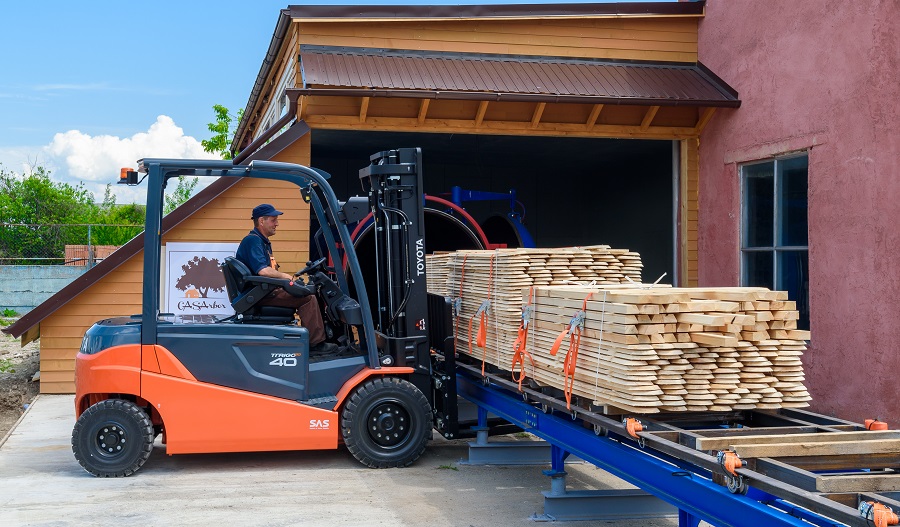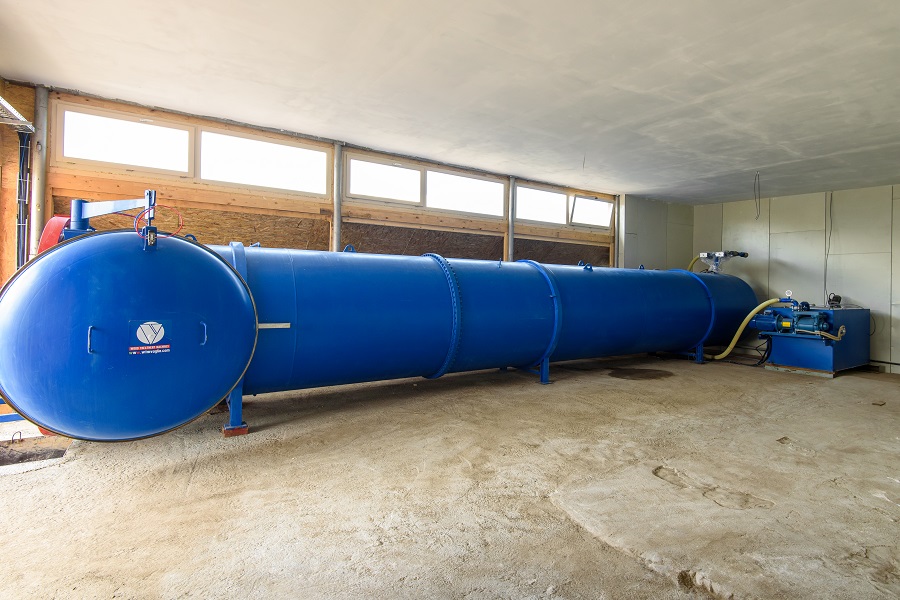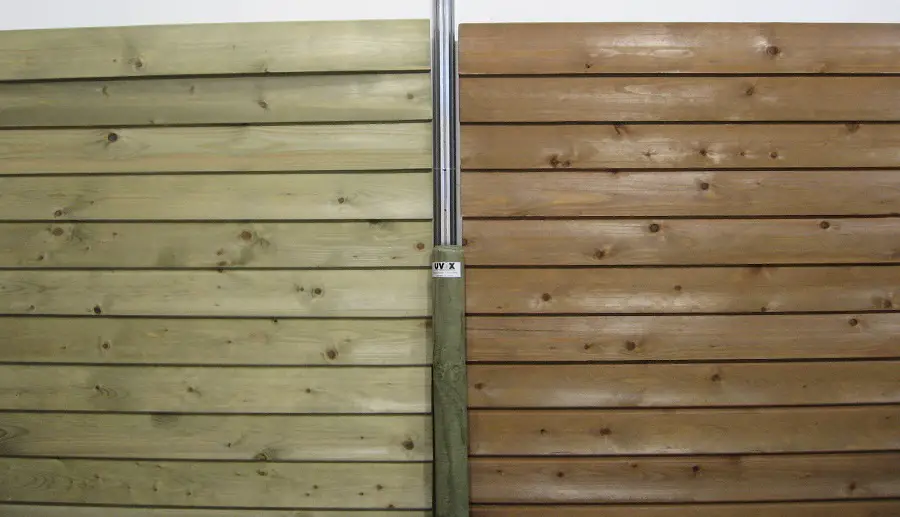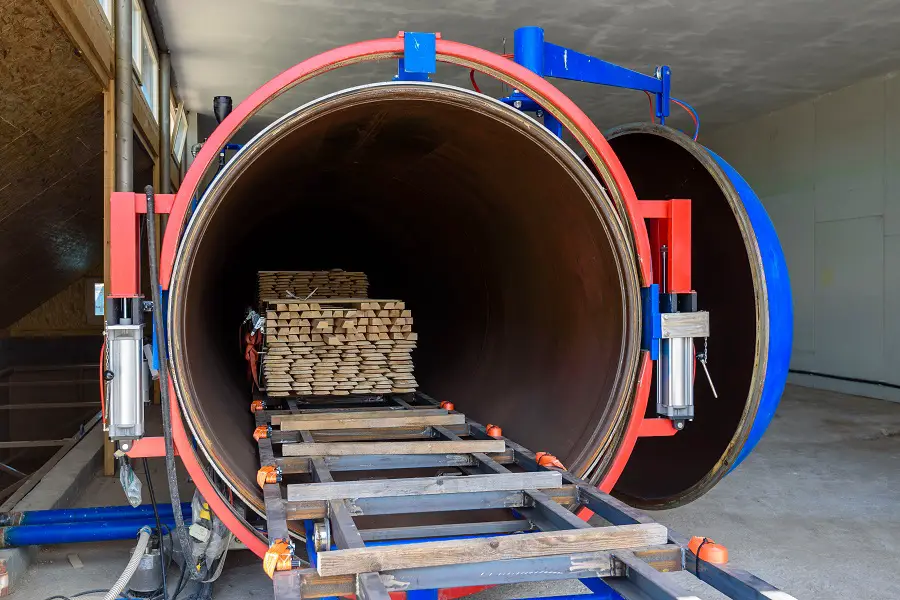Wood, which is used to build houses, fences, bridges, load-bearing structures, is a vulnerable material and can degrade for various reasons, both indoors and, especially, outdoors. Its resistance to moisture, weathering, fungi, mold, insects, insects, fire is different from species to species. However, the resistance can be improved by treatment with various substances, and impregnating wood with insect fungicides makes it much more resistant. Wood treated in this way can be used safely for the load-bearing structures of houses or exterior constructions that have to withstand bad weather or the destructive action of UV radiation.


CASArbor, a home builder that also offers impregnation services
CASArbor is a manufacturer of wooden houses and furnishings in Sfântu Gheorghe, which has recently equipped its factory with an autoclave for wood impregnation. The strength requirements for the wood used as a load-bearing structure or outdoors, especially from external customers, prompted this acquisition. Until they had their own autoclave they had to look for solutions in the country, which were not always within reach.
The purchased autoclave has a large capacity so they can also offer impregnation services to other home builders or those who do outdoor landscaping. The length of the beams or timber can be up to 12 m and the cross-section of the bundle fed into the autoclave can be up to 1200mm x 1200 mm. The maximum capacity of the autoclave is 17 m³ of wood and 31000 l of impregnation solution. Both hardwood and softwood can be impregnated.
CASArbor uses for impregnation Tanalith™ and Tanatone. Tanalith™ is for protection (more on that in a moment) and Tanatone is a stain that colors the wood a pleasant shade of brown. Both must be used to protect the wood. The color obtained from treating wood does not stay the same permanently. Over time it will turn a honey-brown and eventually to a silvery gray. But the discoloration takes much longer and is uniform.

Benefits of insect fungicide treatments
Wood can be treated in several ways, the simplest being the application, with a brush or by spraying, of substances that increase its resistance to insect, fungal and mold attack, water and UV radiation. These are the classic treatment cycles we have spoken on other occasions.
Until the restrictions on these substances came into force, some wood polishing materials were used with the addition of insect fungicides. Thus, along with staining, the wood was also protected. Protection against moisture and solar radiation was provided by specially formulated outdoor-resistant varnishes and paints. Over time, however, it was discovered that some of the insectofungicides were dangerous to humans, and as a result, a number of restrictions on their application were introduced. Insect fungicides are now placed under a special regime and are no longer mixed with finishing materials. Wood is treated with special substances for this purpose, after which the wood is stained and coated with protective materials.
These wood preservatives are water-based and can be applied by brushing or spraying, dipping or pressure. The wood protection method with the best results is pressure impregnation. The substances penetrate deep into the wood, increasing its strength. As a result of the treatments, in addition to being resistant to insects, molds and fungi, the wood becomes more resistant to moisture, dimensionally stable and denser. Pressure impregnated wood can also be found in warehouses and specialist stores. You can easily identify it by its uniform green or yellow color.
Treating wood with Tanalith™
One of the most commonly used products for impregnating wood is Tanalith™. It's actually a family of products made by the British firm Lonza Wood Protection which has been proving its effectiveness for more than 20 years. Lonza Wood Protection is one of the world's leading manufacturers of wood protection materials. The company's products, tested, approved and certified, increase the strength of wood used in the ground or above ground. There are several strength classes and the treatment is done in such a way that the wood reaches the strength required for a particular class.
CASArbor work with these impregnation products to produce wood of varying degrees of strength. Classes resistance are determined according to subsequent use impregnated wood (sometimes you can also find the abbreviation UC 1...5, from use class):
- Class 1 - Wood used indoors in a dry environment (floor joists, floor joists)
- Class 2 - Wood used indoors in moisture-prone areas (roof battens)
- Class 3.1 - Wood used outdoors, above ground and covered with paint or varnish (windows, shutters)
- Class 3.2 - Wood used outdoors, above ground, not coated with paint or varnish (stone post fence)
- Class 4 - Wood in direct contact with soil or fresh water (fence posts, plows, trellises)
- Class 5 - Wood in salt water for marine use (marine piles)
Tanalith™ E is a water-dilutable product based on copper and organic biocides (triazoles) which gives the treated wood an initial natural pale green color. Over time, the treated lumber discolors slightly to warm honey-brown and finally to a natural silvery gray. The treated wood - sometimes also called tannalized wood - is ihill for fences, terraces, pergolas, playgrounds and construction applications, with resistance to fungal, mold and insect attack long-term.

How pressure impregnation is done in the CASArbor autoclave
Wood impregnation is done in an autoclave, in a cycle involving lowering, raising and lowering the pressure.
- The lumber is checked, stacked and autoclaved. Wood moisture should not exceed 25%
- The autoclave is vacuumed so that the air in the wood is removed
- The impregnating solution is introduced until the autoclave is completely filled
- Hydraulic pressure is applied so that the preservative penetrates as deeply as possible into the wood
- The liquid is removed from inside the autoclave and returned to the storage vessel. A depression is again created inside the autoclave
- It returns to atmospheric pressure so that the liquid remaining on the surface of the wood is absorbed inside the wood, where the pressure is lower
- The wood is removed from the autoclave and left outside to dry.
The difference between resistance classes is the duration of the entire impregnation process. This can be between 1 and 4 hours, depending on the wood species, the thickness of the wood and its subsequent use (strength grades).

CASArbor does everything with dedication and commitment, trying to provide customers with prompt service in accordance with their needs and wishes while respecting nature. It may seem strange, but impregnating wood is also part of the same idea of protecting and appreciating nature. Impregnated wood can be used for a longer period of time and its strength is greatly improved.




































Hello. Do you know of any companies in Romania that produce treated wood? I have looked in all the big stores but I haven't found any. I intend to get some from Denmark. I found a company in Romania that brings treated wood from Finland, but it is extremely expensive, twice as expensive as in Denmark.
Thank you
Good evening!
From Holver you can buy treated wood.
There are other companies that treat wood. You can find them on the net and you can also find out what kind of treatment they apply.
All the best!